The festival will mark its 50th-anniversary season with a host of enticing programs.
“If music be the food of love, play on,” begins the most famous opening speech in Shakespeare. The line also supplies the title for the concert that will launch the 50th-anniversary season of Indianapolis Early Music’s Early Music Festival.
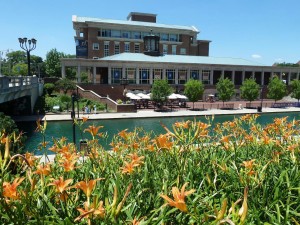
The opening event on June 17 will commemorate the 400th anniversary of Shakespeare’s death. The “Willow Song” from Othello, “Full Fathom Five” from The Tempest, and the “Gravedigger’s Song” from Hamlet are among the selections on a Baltimore Consort program titled “The Food of Love: Songs, Dances and Fancies for Shakespeare.”
Mark Cudek and his Baltimore ensemble will work with actors from Indiana Repertory Theatre, the city’s main professional company, who will supply verbal and dramatic context for musical references in the plays. Cudek, director of the early music department at the Peabody Conservatory in Baltimore, has been IEM’s artistic director since 2007. Setting up collaborations continues to be a strong feature of his leadership.
One famous Shakespeare song not included in “The Food of Love” nonetheless captures the ambiance of IEM’s beginnings. In As You Like It, Amiens, one of the lords accompanying the banished Duke in the Forest of Arden, introduces a pastoral song starting “Under the greenwood tree.”
The Indianapolis organization’s origin in the late 1960s as the Festival Music Society parallels the vision in Amiens’s song. The society initially offered outdoor concerts with food and drink on the grounds of Oldfields, a former home of the Lilly family that the drug-company founder’s heirs bequeathed to the Indianapolis Museum of Art in 1967.
As Shakespeare writes in the second verse of the song:
Who doth ambition shun,
And loves to live i’ the sun,
Seeking the food he eats,
And pleased with what he gets,
Come hither, come hither, come hither.
Here shall he see
No enemy
But winter and rough weather.
“Rough weather” sometimes visited the society’s early concerts, requiring use of a nearby rain site at the art museum. Outdoor concerts haven’t been a festival feature for decades. “The weather was always a problem,” one of the founders recalled.
The founders certainly didn’t shun ambition, however. “Come hither, come hither, come hither,” they beckoned the music-loving public, and it did, though the Oldfields lawn couldn’t accommodate more than 100 people. Wanting a place for classical music, the founders created a robust seasonal alternative to Starlight Musicals, a resident musical-theater company, a few miles away.
The city’s professional classical musicians—chiefly members of the Indianapolis Symphony Orchestra—were idle, and their fans had nothing local on their summer concert schedule. “This was before Symphony on the Prairie,” said Dorit Paul, a board member for 20 years in the early days, referring to the ISO’s summer concert series. “If you wanted music in the summer, this was it. We were the only game in town.”
“They were people who had gone to Tanglewood and Aspen, and they wanted to do that here,” said Frank Cooper, a harpsichordist and pianist who a few years later would set the festival on the path to success as artistic director. He is now a musicologist on the faculty at the University of Miami in Coral Gables.
When a small group of music lovers set about to close the gap in 1966, a focus on music before 1800 took hold after the first series the next summer. In 1969, the group filed for tax-exempt status as the Festival Music Society. Its eight-member board wrote a prospectus describing the festival’s purpose as “promoting serious music during the summer months.” By 1970, five concerts were scheduled, divided between two prominent Indianapolis churches, on a budget of just over $5,400.
A Festival Orchestra of local professionals—paired with a specially recruited chorus—was assembled to accompany performances at large local churches of J. S. Bach’s St. Matthew Passion in 1967 and Mass in B minor in 1968. As the festival was feeling its way, the repertoire ranged forward to Respighi’s Ancient Airs and Dances and neo-classical Stravinsky. Rossini, Tchaikovsky, Bartok, Britten, and Hovhaness also were represented.
Getting historical
The festival’s present focus on music before 1800—historically informed and using instruments of the era (or replicas)—first entered the picture after Cooper, then a 35-year-old music professor at Butler University, was hired as artistic director in 1973. Tussles with the musicians’ union helped nudge the emphasis toward original instruments, making it unnecessary to hire a local alto saxophonist—as the union insisted—only because his instrument’s range was about the same as the oboe d’amore called for in Bach.
Cooper had mounted a Romantic Festival at the university that had attracted national attention, and the energetic relative newcomer—he’d come to Indianapolis from Florida just 10 years before—had already been tapped to direct the Metropolitan Arts Council.
In its home region, the Festival Music Society had the field to itself. The Early Music Institute at Indiana University (now the Historical Performance Institute) would not be established until 1979. Dedicated university and conservatory study of early music was in its infancy in this country.
The fledgling festival had only a few seasons under its belt when it was forced to suspend operations in 1972 as the result of slight deficits each year. In 1970, disagreements “over rehearsals, soloists and other policy matters,” according to the Indianapolis Star, had led to one music director’s resignation two months after his hiring. But the festival went ahead, sustained by the efforts of its founders.
No concerts were presented in 1972; a $7,000 debt couldn’t be covered. “We simply didn’t get the job done,” said Fred Schlegel, FMS treasurer at the time and a board member for all but three years of the society’s existence. “We needed to borrow, and no bank would lend us money unless each of us was individually behind the note. A majority of the board wasn’t willing to guarantee the debt.”
The society had already gone quickly through three directors. Cooper decided on a more specific repertoire focus than his predecessors. His plan won the board’s approval, with its thematic programming and an alliance with the Butler Ballet, under the direction of Cooper’s university colleague, George Verdak.
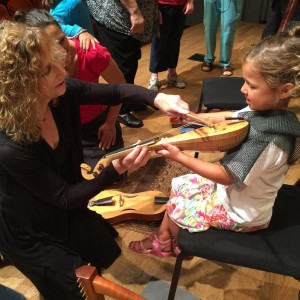
“We would meet at the end of the season and [Cooper] would have a suggested list of whom to employ for the following year,” said founder and former officer David Garrett. “And generally everyone went along with it. A lot of startup groups were functioning during that time, and Frank was able get a lot of those people before they became famous.”
In 1973, eight concerts—presented outdoors at the Indianapolis Museum of Art—wiped out the society’s debt and finished $7,000 in the black to apply to 1974. Ever since, the Early Music Festival has been solvent.
“Frank was very practical,” Schlegel said. “We never had to say something was too expensive. We never had to rein him in. He knew how to negotiate with the musicians. Inevitably, he would come in with a budget that was livable, if not easy.”
Since that early debt no one wanted to cover, it has been the practice of both Cooper and Cudek to propose a season near the end of the one just concluded along with a balanced budget, which currently stands at $150,000.
A Lilly Endowment grant was secured after Cooper engaged Helmut Müller-Brühl and the modern-instrument Cologne Chamber Orchestra for a month-long residency in 1974, funded by the West German government. “It was our having the cachet of recognized European musicians that sold us to the Lilly Endowment,” Cooper said.
It was also the first season of many for Igor Kipnis, who became a nearly annual guest artist (harpsichord and fortepiano recitals, plus concerto performances) through 1990. A popular favorite whose commentary from the keyboard was engaging, he was occasionally scolded by critics for the frequency of missed notes.
Yet season after season, Kipnis displayed an intimate knowledge of keyboard repertoire and presented it in attractively designed programs.
The continuation of ballet performances in the early years guaranteed that early music would not be the festival’s sole focus. So did concerts focusing on the First Viennese School by, among others, the Smithsonian Chamber Players and the Mozartean Players.
Early music prevails
But the shift toward early music was inevitable. The educational focus of the Lilly Endowment grant of $51,000 underwrote a new Early Music Institute, which overlapped with the concert schedule. The school provided instruction to young musicians eager to explore pre-modern instruments and the performing styles suitable to them. It continued on an annual budget of $30,000 for three years. Marian College (now University) was its home, where students and faculty stayed and classes were held.
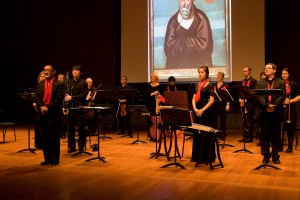
Instrument makers were also festival guests during that period. As a result, the society acquired a collection of instruments. After the fourth season, the institute was discontinued. With two legacy funds plus the proceeds from selling the instruments, the society established an endowment—now $1.3 million and administered by the Central Indiana Community Foundation.
Although the core audience has a preference for the High Baroque, Cudek, a specialist in cittern, bass viol, and guitar, has increased the presence of medieval and Renaissance music since becoming artistic director in 2007. He received some pushback from patrons against the earlier repertoire, but the shift has gone over well with most supporters. “I would not characterize the society as any sort of small clique,” Schlegel said. “We wanted good music, and we’ve had a variety of people serve on the board of directors. In all the years I’ve been on the board, there’s been no acrimony over the content of the programs.”
Cudek had visited Indianapolis professionally several times during the Cooper years. Playing with Hesperus and the Baltimore Consort, he remembers that until 2006, he considered Indianapolis “just another gig.”
The turning point occurred when the festival established itself downtown after decades at several sites, starting with the art museum and continuing with a few churches, a private school, and the somewhat too-cozy Indianapolis Art Center. For the past eight seasons, the festival’s home has been the Eugene and Marilyn Glick Indiana History Center. Concerts are presented in an acoustically favorable auditorium near the center of downtown next to a renovated canal, with parks and restaurants nearby.
“The combination of hanging out downtown and going to rehearsal there made me aware of so many things about Indianapolis,” Cudek said. After the Baltimore Consort performed “Spanish Music in the Age of Discovery: Cancioneros of the Kings of Spain,” the ensemble thought, as Cudek put it, “We can’t wait to come back here. A year later, as chance would have it, there was a job opening.”
That ushered in the Cudek era at the festival after 34 years under Cooper’s direction.
“There were big shoes to fill,” said Cudek, “but I felt that there was a bit about the festival that was almost in a rut. I was struck by how open people were on the board when I suggested going in a different direction.”
With the board’s approval, Cudek instituted free family shows and preconcert chats as “a direct response to long introductions before each concert,” he said. “I chose to have the musicians involved and have it be optional for the audience to enter.”
A Golden Season
Along with an appearance by the iconic English soprano Emma Kirkby, the 50th-anniversary season will include collaborations with the Lute Society of America (Xavier Díaz-Latorre, vihuela and baroque guitar, June 24) and the Indianapolis Baroque Orchestra, with which the festival will present a new concerto competition July 10 as the season finale.
In addition to musicians from the United States, the 26 contestants from Bolivia, Bulgaria, Canada, China, Lithuania, and Singapore will play a variety of string and wind instruments, plus harpsichord. The jury will consist of Dana Marsh, coordinator of Indiana University’s Historical Performance Institute; Ingrid Mathews, former music director of Seattle Baroque Orchestra; and Jeannette Sorrell, founder and artistic director of Apollo’s Fire, the Cleveland Baroque Orchestra.
“I found my niche with Mark,” said Gail McDermott-Bowler, a society founder who has served as the festival’s managing director since 2007. “He has an enthusiasm and a personality that opened doors in the community and got him closer to the audience. He introduced younger musicians and new techniques of early music.”
One consequence is more diversity of age on the board, which now numbers 30. “I think the board is more open than it used to be,” said Tom Duncan, who recorded festival concerts for 30 years for archival purposes. “It’s younger now, with different ideas. Early on, it was moneyed people on the board from around town.”
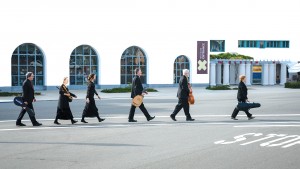
McDermott-Bowler recognizes that the society’s challenge is to engage young people both in the audience and as volunteers. “Younger people would connect more with other young people,” she said. Besides, long-term supporters “are moving away or dying.”
Among the new generation is 24-year-old Alexander Beauford, a public relations consultant and former elementary-school music teacher. The Indianapolis resident got involved with the festival as a student at the University of Indianapolis. Beauford is a notable beneficiary of festival outreach: he was a student at the city’s arts-magnet high school in 2008 when Cudek’s Baltimore Consort visited.
Last year, Beauford completed five years on the FMS board, on which his focus was education. “We really reached out to schools,” he said. “We would have students come to the spring concert,” the annual prelude to the festival season.
Beauford believes pre-concert chats are part of what will keep young people coming back, and that they should be as refreshingly different for the uninitiated as the music itself. The talks “have to be less dry and more peppy,” he said. “Tell me something crazy about [the instruments]. There’s a danger in being too academic.” Another younger-generation supporter, Christopher Freeze, finds the biggest obstacle to drawing young people is the decline of general music education. “People aren’t learning music like they used to in previous generations,” said Freeze, a singer with a master’s degree in public affairs and a three-year member of the board, specializing in finance.
He sees a possible way around the difficulty by appealing to pop-culture interest in history and movies set in the periods covered by early music. “Game of Thrones feels very medieval, and Wolf Hall,” he said. “People feel fascinated by Tudor England. We could tap into that interest.”
Looking ahead
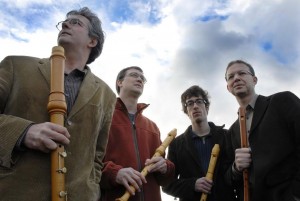
Cudek has kept tabs on up-and-coming groups, including winners of the Early Music America
competitions—such as Wayward Sisters and Plaine and Easie—in order to book them for the festival. Typical of his practice of planning two years out, he has engaged Infusion Baroque, the Montreal-based ensemble that won the 2014 EMA Grand Prize and Audience Prize, for 2017.
“A lot of our audience members are into folk music, jazz, rather than standard Baroque repertoire,” said Cudek. “I’m hiring groups that will play this music in a very exciting way—passionate and high-energy. I would lean toward the entertainment value because of what our audience wants.”
This freedom of presentation is linked to the increased stature of early music at universities. “I’m critical of highly academic performances that don’t move me, without any individual interpretation,” Cudek said. But the technical prowess encouraged by academic programs is beneficial as well, he added. “Now the same level of people who are doing the Tchaikovsky concerto are doing the Biber violin sonatas. One of the biggest changes in the early-music field is that it’s no longer a field in which they start learning it in grad school.”
The higher profile of early music puts a premium on reaching the public, Cudek said. “I want musicians to be engaging the audience. They are not a separate entity on the stage. I know personally how important it is to get energy from the audience. You play differently.”
With that in mind, the IEM Early Music Festival’s longevity is a sure sign it “loves to live in the sun” as it begins its next half-century.

